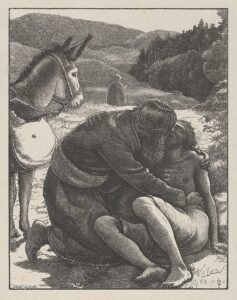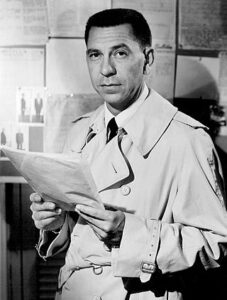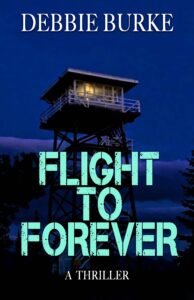
Photo credit: wikimedia CC-BY-SA-3.0
By Debbie Burke
Let’s welcome another Brave Author who submitted a first page for review. Enjoy reading it then we’ll discuss.
~~~
“Waller, they found a body on the Midwest Bike Trail about two hundred feet east of the Northwestern tracks,” stated Police Sergeant David Dodson, our special-operations supervisor. His voice was full of tension. Even when he smiled, his dark brown eyes never quite lost their keenness or their watchfulness.
I sat up straighter at my desk. “Isn’t that the Forest Preserve Police?” I asked into my cell.
“They’ve asked us to handle it because it looks like a homicide. I want you and Garcia on it. I’ll notify the coroner next.”
“A body? Yeah, we’re on it.” I looked at my partner, Detective Carlos Garcia, seated at his desk. He’s not bad looking. The Fu Manchu mustache looked good with his brown skin. A raised glazed donut perched in his right hand and a paper cup of Dunkin coffee before him on his desk. His white shirt and blue suit hung lean and long off his well-tapered build. I looked down at my solidly built arm, thinking, how can he eat donuts and still look like that? I became aware I had to hook my belt on the last notch when I dressed that Monday morning. I told him, “They’ve got a body for us.”
Garcia’s hand stopped halfway to his mouth. He made the necessary adjustments that would transform his appearance from simply splendid to magnificent. Only after each hair had been lovingly combed into position and his silk tie straightened, the second button of his jacket buttoned, he rose his six-foot frame and said, “Let’s go.”
My career as a detective with the violent Crimes division of the West Chicago Police Department exposed me to a lifetime of crime and tragedy. We strode out of the station house in a hurry to begin our job. I pride myself on being a no-nonsense individual. I’m thirty-five-year-old Detective Alicia Waller. My black shoes making long, mean strides.
Once in our unmarked Ford Explorer, I turned towards him and asked, “What do you know about the bike path?”
Garcia grew up in this town, probably walked that path hundreds of times as a teenager.
~~~
Okay, let’s dig in.

Photo credit: Public domain
The title Samaritan Sins intrigued me. Samaritan conjures the image of kindness and compassion. Sins brings to mind misdeeds, perhaps even evil. The ironic juxtaposition hints at the story’s conflict. Does a good person commit a terrible act? I want to learn more. Well done!
Unfortunately, this first page doesn’t live up to its promising title.
Brave Author, recently Terry Odell and Jim Bell wrote excellent posts on beginnings. I highly recommend you read them at links here and here.
Jim coined a new term—Wood—and quoted an old saying:
Your story begins when you strike the match, not when you lay out the wood.
The first page of Samaritan Sins is wood laying. It needs work before a match lights it on fire.
Brave Author is getting acquainted with the characters, their backgrounds, and the setting, before starting the story. Yes, preparation is important homework. But the information belongs in an outline, story notebook, character sketch, etc., not on the first page.
Police procedurals—which this appears to be—generally start with a dead body, in this case on a bike path in West Chicago. However, neither the point-of-view character, Detective Alicia Waller, nor the reader sees the body firsthand.
Instead the story begins with a report by a supervisor, Sergeant Dodson. That distances the reader from the crime. A report by phone, rather than in person, adds even more distance.
Further, it’s confusing. Alicia describes Dodson’s watchful dark brown eyes as if he is standing in front of her. Yet, in the next paragraph, she is talking to him on her cell.
The farther away from the crime, the less a reader cares about it. A crime needs to provoke an emotional response from the reader. A third-hand phone report dilutes the impact.
Details like “two hundred feet east of the Northwestern tracks” also dilute it. Specific details are important to paint a vivid picture. But choose details the reader cares about, not bland measurements.
There is a lot of repetition.
“…they found a body…”
“A body? Yeah, we’re on it.”
“They’ve got a body for us.”
Alicia mostly tells about Carlos Garcia, rather than showing. The description is also repetitive.
He’s not bad looking.
The Fu Manchu mustache looked good with his brown skin.
…transform his appearance from simply splendid to magnificent.
She appears to have a crush on him. Fine, but is that important enough to include on the first page? Not unless it’s significant to the story.
I strongly recommend getting rid of the donut cliché. Look for fresher ways to show Carlos’s looks. But again, consider if these details are significant enough to use up valuable first page real estate. If not, cut them.
Only after each hair had been lovingly combed into position and his silk tie straightened, the second button of his jacket buttoned…
Would this vain-sounding guy fuss with his appearance without first washing donut glaze off his hands?
I mention this because his sticky hands took my mind far away from the dead body. When the reader can be distracted that easily, there’s a major problem.
My career as a detective with the violent Crimes division of the West Chicago Police Department exposed me to a lifetime of crime and tragedy.
This statement is pure telling without offering insight into Alicia’s personality or how the career has affected her. Is she jaded? Wounded? Fed up? Does she still hold out hope she can help people? “A lifetime of crime and tragedy” is vague and meaningless without specifics.
I pride myself on being a no-nonsense individual. I’m thirty-five-year-old Detective Alicia Waller. My black shoes making long, mean strides.
Again, more telling rather than showing. How important is it for the reader to know this on the first page?

Photo credit: Public domain
A Jack Webb/Dragnet-style introduction could condense the background info and establish a distinctive voice while also moving the story ahead. Here’s one way it might be written:
I’m Detective Alicia Waller, West Chicago Police Department, fifteen years on the job, the last four in Special Operations. I’m thirty-five, wear sensible shoes, battle my weight, and have a secret crush on my partner, Carlos Garcia, a stylishly-dressed six-foot hunk with a Fu Manchu mustache. He’s vain but I forgive that flaw because he’s easy on the eyes.
Together we’ve worked violent crimes ranging from gang murders to a sexual assault on a ten-month-old baby that sent us both to the department shrink.
Today, we stood over a deceased teen-aged male lying face-up on the Midwest Bike Trail. Forest Preserve Police had called us because they suspected homicide.
The above is about 100 words, conveys relevant facts, introduces characters, and plops the reader into the crime scene.
Wordsmithing:
Overall, the writing is competent but verb usage needs work.
Stated is an awkward verb that draws attention to itself. Why not use said?
Perched is another odd verb. A parakeet might perch on his hand but not a donut.
…a paper cup of Dunkin coffee [sat] before him on his desk. Missing verb.
His white shirt and blue suit hung lean and long off his well-tapered build. Hung doesn’t work. Is the suit hanging lean and long? Or do you mean his build is lean and long?
…he rose his six-foot frame. A person generally doesn’t raise his frame unless the frame is for his barn.
My black shoes making long, mean strides. This sentence lacks a verb. It’s also inaccurate and awkward. The shoes aren’t striding; Alicia is. What are “mean strides”? Emphatic, loud, decisive?
In trying to be creative with verbs, BA instead inserts speed bumps and confusion.
~~~
Brave Author, I hope you don’t feel beat up by these comments. As writers, we’ve all been here. It’s part of the learning process as you hone your craft.
I suggest you save this first page in a “story notes” file. Refer to it as you develop the plot and characters. The information is useful background—it just doesn’t belong on page 1.
For now, move ahead with your story. After drafting a few chapters, you’ll likely find a more compelling place to start. Once you complete the ms., circle back and rewrite the opening.
Just because it says “Page 1” doesn’t mean it has to be written first. Write it last.
One way to interest readers is to make them curious. Ask questions they want answers to. Here are a few ideas:
What makes one or both members of this detective team unique?
Why should the reader care about a faceless victim in a city where murders occur frequently? (Hint: give the victim a distinctive characteristic. Is she missing an arm? Is he a local celebrity?)
Are there special circumstances or unusual clues that set this crime apart from run-of-the-mill calls?
Thank you for submitting, Brave Author. It takes courage to expose your work to strangers. Please take suggestions in the spirit they’re offered—to help make your story the best it can be.
~~~
TKZers, your turn to offer ideas to the Brave Author.
~~~
Flight to Forever was a finalist for the 2022 Eric Hoffer Book Award. Try a sample at these links:
Or ask your favorite independent bookstore to order the paperback.

1st paragraph: “our” special… sounds omniscient. What about “my”? Also, the description of the supervisor implies to the reader that supervisor is physically there, yet in next paragraph, he’s on the phone.
“Isn’t that the Forest Preserve Police?” sounds like “hey reader!”. Would it be more from the perspective of the POV character to say something along the lines of “why aren’t the preserve guys handling it?” or to that effect.
Paragraph 4: “A body?” is redundant. Seems odd that POV character is speculating on his partner’s looks (‘not bad looking’)—someone he(?) hangs out with every day. Strike “I became aware”. And the cops/donuts thing—if you really want the cliché, use it. If not…
Paragraph 5: You can cut most of this paragraph—just get him into action.
Garcia is better defined as a character and I already feel I see him. We’re unsure about if the POV character is male or female until the end of the page. If I were to read on to the second page, it would be to see how Garcia, NOT the POV character, starts to play out. For me, POV character is a bit of a turn off because they are focused on shallow things like looks, instead of the work at hand. If that’s what you intend for the POV character and it’s part of a growth journey, then ok—although if they strike the reader as shallow on the first page and turn them off, the reader is never going to know their journey of growth because they won’t be reading on. And do they have to receive the CALL about the body or can they just be there as a result of already having gotten the call to respond?
Not intended to be critical, just my honest reaction to reading the page. Hope it helps as you continue on!
Thanks, BK. I agree that a better starting place is to put the two detectives at the crime scene. Then show how they work the scene which reveals their personalities in action, rather than by telling.
Thank you, Brave Author, for submitting your work. Like Debbie, I love the title you chose, and I’m looking forward to understanding what it means.
I also agree with Debbie that there’s a lot of “wood” in this first page. I see the author trying to explain every detail to me rather than letting me figure it out. It’s more fun for the reader to put the puzzle together, one little piece at a time.
Starting at the crime scene is a great idea, but I don’t think it’s required. I could also envision something like: My black, almost-orthopedic shoes clacked across the tile floor as I headed for the door. “Let’s go, Garcia,” I called over my shoulder. “Dodson says he has a dead body for us.” And so on.
I especially liked Debbie’s comment: Just because it says “Page 1” doesn’t mean it has to be written first.
Good luck!
“It’s more fun for the reader to put the puzzle together, one little piece at a time.”
Great insight, Kay. Spoon-feeding information doesn’t engage the reader. Let them figure it out.
Jim Bell’s perennial advice is “Act first, explain later.” Words for writers to live by.
Great critique, Debbie. You covered it well. I agree with all your points.
Brave Author, you have received valuable advice. Print out the critique and save it with your first page notes, then follow Debbie’s advice.
I particularly like Debbie’s idea of a Jack Webb/Dragnet sort of introduction. Writing that might help you launch into the story and find that sweet spot to begin the story for the reader.
Good luck with your writing.
Thanks, Steve.
That “sweet spot” is an elusive little devil, no matter how many books we’ve written.
It’s hard to be objective about our own writing. That’s why critique groups and/or beta readers can be helpful to point out *THIS* is where the story should start.
“This is the city, Los Angeles, California. It’s a nice place to work and raise a family. It’s also a ripe place for murder. I work here. I carry a badge.”
Dum-duh-dump-dump…
Jim, I shoulda known you’d do a spot-on impression of Jack Webb.
O Brave Author, you’ve submitted your work for a critique in the best possible place. Several denizens of Killzoneblog have already commented, and doubtless many more will weigh in. Thus Ming the Merciless’s notes will be brief and will consider the chapter from a slightly different angle:
The desiderata of non-fiction are these: Unity, Coherence, Emphasis. These also can apply to fiction. Unity: write about one thing, overall. You’ve got this, so far, at the chapter level: this is mostly the opening chapter about a murder on the Midwest Bike Trail. But unity also applies at the paragraph level. Paragraph One includes dialogue, description, introduction, characterization. It’s all too much. Keep the dialogue. The 2nd sentence is a bit iffy. The 3rd sentence is too far off the paragraph topic. Check the unity of all subsequent paragraphs.
Coherence: Sentences and paragraphs should flow smoothly and should not jump around in time or place. The piece is somewhat better in this area, but could be improved.
Emphasis: Put the most important stuff either up front or at the end. You’re okay, here, with your first paragraph, subject to the comments of others. But putting the discovery of the body at the top might be even better. Adding at the end the possibility that one of the detectives may know the victim or that the victim is a VIP, may improve the scene, too.
Now the fiction desiderata: Try seeing this as an action scene. Early on, create some tension, a need for speed: schedule a state-wide marathon on the trail in one hour. Wildlife or early morning joggers may be destroying vital evidence. As an action scene, the need for improved unity/coherence/emphasis would be even greater. Tighten the chapter drastically. Defer any character descriptions. Drop the donuts and the “monly-men” charms of the officer. Hook the readers.
J, thanks for the deeper dive into the structure. Great points.
Also your suggestion of adding a ticking clock (marathon in one hour) is an excellent way to up the tension and urgency.
I was getting into your story BA until I got bogged down in all the unnecessary words. Read over Debbie’s changes, it looks like there is something worth reading in there.
My additions. Not only is the cop and doughnut very cliché, so is Carlos Garcia. Latino detective? Totally works. I found baby name lists for Mexico (from Pampers) and Guatemala. Move away from the easy.
I did not realize Waller was female until the very end. That there are female detectives isn’t that big a deal anymore. Although should she really be panting over her partner first thing in the morning?
As Debbie said, no one touches their silk ties with doughnut glaze on their hands. No One. Also, silk ties are pretty common. If you want to make him cover of GQ worthy, he needs brand names. Hermes is classic, Tom Ford trendy. Here is a list: https://www.modernfellows.com/most-expensive-luxury-neckties/
Debbie covered the shoe thing. It totally threw me off.
“Once in our unmarked Ford Explorer, I turned towards him and asked, “What do you know about the bike path?”
Garcia grew up in this town, probably walked that path hundreds of times as a teenager.”
How about something more like this?
We were enroute to the bike path in our unmarked Explorer when Carlos said, “You know the spooky stories about that part of the park, don’t you? I grew up playing in that park, but momma said never after dark.”
Wonderful suggestion about inserting Carlos’s eerie history with the park location. Thanks for chiming in, Alan.
Knowing nothing of the story I went that way. But the same structure could be used for any past with the park. Weller and Garcia use an unmarked Explorer. Garcia grew up near the park. The park has a history.
Thank you so much for your help. I will use your suggestions and go back to my drawing board.
Hi Susan,
Thanks for sharing your identity. Please don’t be discouraged. One of a writer’s toughest challenges is where to begin. Believe me, I’ve thrown out many a first page before finally finding the right place to start the story.
For a long time, I though if I wrote a scene, it had to stay. Nope. Now the delete key is my best friend.
Just keep moving forward and developing the story. You can always come back later. Nothing is cast in concrete.
Best of luck and thanks for submitting!
Thank you for your suggestions. I will go back to my drawing board.